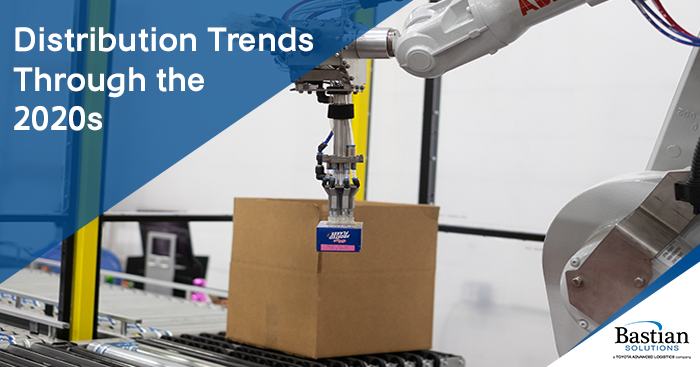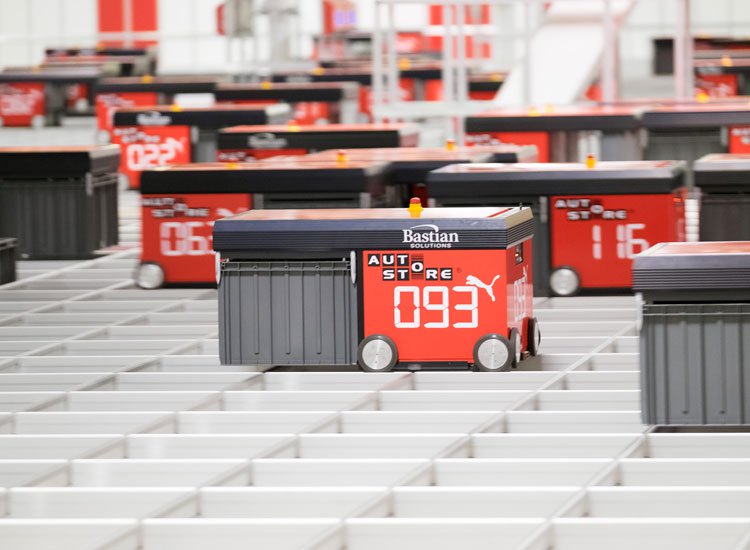
Major Trends That Will Drive Distribution Throughout the 2020s
Marvin Logan | 13 June 2019
Millennials, the first native-born digital generation, now outpace baby-boomers in combined buying power for the first time in history. It is anticipated that Millennial spending will account for 30% of total U.S. retail sales in 2020, or $1.4 trillion annually (Source: Accenture). It is logical to assume that millennials, and their desire for choice and convenience, will drive requirements and expectations on fulfillment and logistics creating a new “on-demand ecommerce” model throughout the 2020s.
On-Demand Ecommerce Becomes the Norm
On-demand ecommerce is the expectation to buy and receive goods whenever and wherever wanted – including delivery on the same day. Orders will be placed from phones, from vehicles, and numerous Internet of Things (IoT) devices (think Alexa, Siri, Google on steroids) that will be integrated into everyday lives. This order convenience will not only impact how and when products are ordered, but also when they are delivered. The desire for convenience and our growing impatience has started to create more and more expectation for same-day delivery of goods.
This spring, Amazon announced it had invested $800 million in narrowing Prime shipping to a one-day window, rather than two days. Amazon is already capable of next-day delivery to about 75% of the total U.S. population - and already has a huge head start in fulfilling its promise to shorten the current two-day free shipping plan to same-day.
Amazon has already changed the game and set consumer expectations in the ecommerce market, and this plan will continue to raise total consumer expectations and force other retailers to keep improving their logistics infrastructures in order to compete.
Most retailers are only recently starting to offer two-day shipping. They will be forced to spend even more on improving their logistics infrastructure to try and keep pace with Amazon. To be relevant, they will have to build more, smaller distribution centers (DCs) in population hubs to keep delivery windows short. We are already seeing this trend and we will continue to see the expansion of smaller DCs throughout the 2020s.
Labor Challenges Force Even More Automation

Labor is arguably the most critical element of the logistics operation. It is no secret that there has been a labor shortage in the US for some time now. The U.S. economy has added jobs for 103 consecutive months. Unemployment recently touched its lowest level in 49 years. Workers are so scarce that, in many parts of the country, low-skill jobs are being handed out to pretty much anyone willing to take them—and high-skilled workers are in even shorter supply. (Wall Street Journal, May 3, 2019).
Considering the effects of increased ecommerce and growing demands for same-day order delivery noted above, the logistics industry is growing in size and complexity – causing a simultaneous need for labor. In the recently released 19th Annual Third-Party Logistics Study, 50% of surveyed executives are encountering this problem. Anecdotally, the lack of available labor, esp. during critical peak shipping periods, is the number one reason we at Bastian Solutions hear for the interest in automation.
All of this comes at a time when the cost of automation is decreasing. ARK Investment Management, a leading researcher in this market, says that industrial robot costs are expected to drop 65% by 2025. They predict that the average cost per robot will drop from $31,000 to $11,000 over that time period.
These factors are causing the interest in robotics and automation to be extremely high. MHI, the international trade association representing the material handling, logistics and supply chain industry, announced in April that ProMat 2021 will feature a new Robotics and Automation Solution Center. ProMat is the largest international material handling, logistics and supply chain show and conference held in North America and South America. MHI’s press release states “From AS/RS and G2P to AGVs and AGCs to autonomous mobile robots and articulated robotic arms, this new Solution Center will showcase how these solutions play a vital role in improving receiving, storage, assembly, picking, sortation, packing and shipping operations.”
The decade of the 2020s will see continual increase in automation, with “lights out” distribution centers being the ultimate goal.
As competition and the demand for faster distribution continues to increase, it’s even more essential for companies to invest in effective solutions that deliver the necessary performance for the right cost.
Marvin Logan is the Vice President of Consulting and Integration at Bastian Solutions. After graduating from Purdue University, Marvin started his career as an industrial engineer and quickly moved into management. He has had roles as a distribution system manager, operations manager, director of engineering, director of distribution, and vice president of distribution for several leading companies.
Comments
No comments have been posted to this Blog Post
Leave a Reply
Your email address will not be published.
Comment
Thank you for your comment.